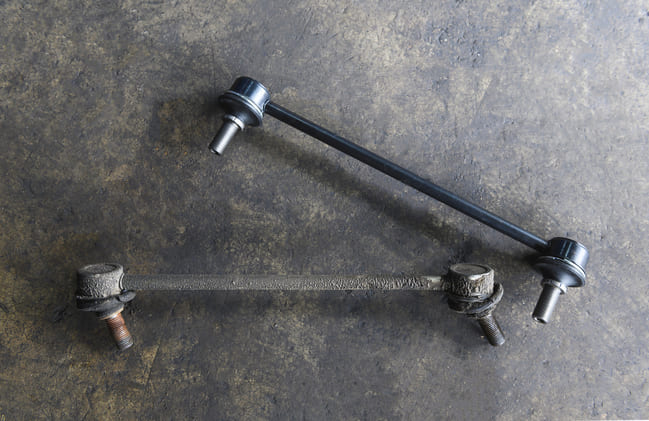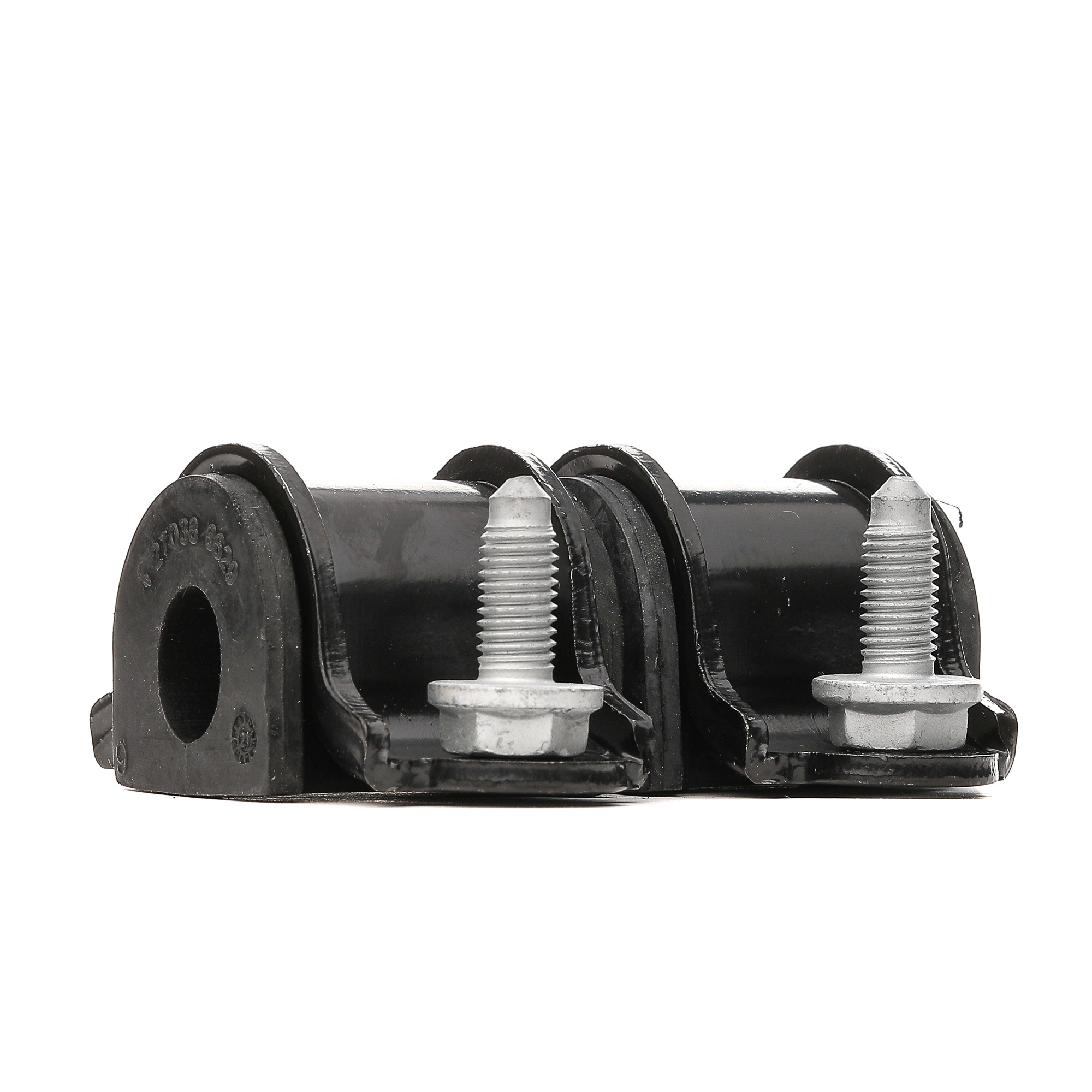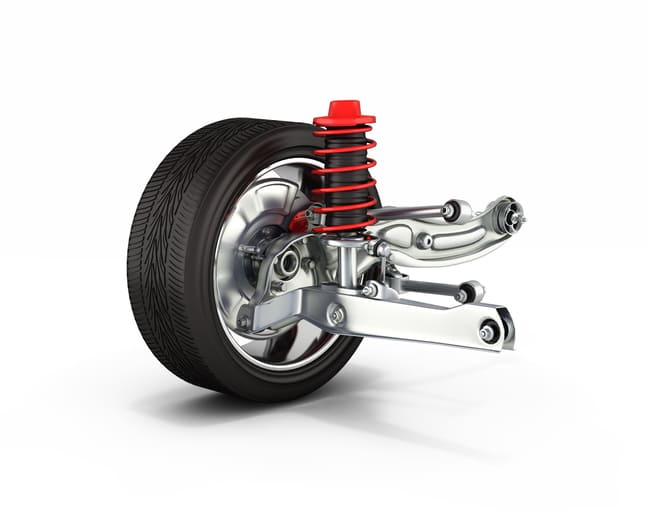Table of Contents
Anti-roll bar link: function, failure symptoms, and replacement cost
As the name suggests, the anti-roll bar, aka. sway bar or stabiliser bar, keeps the vehicle stable and prevents body roll when cornering or manoeuvring. It is a U-shaped metal bar or tube that is connected to the suspension on both sides of an axle via the bar’s drop links. The rear and front car anti-roll bar links are typically around 4 to 6 inches long and attached to the bar at a 90° angle.
When a car turns a corner, the weight of the car body shifts to the outer wheels, causing it to sway or lean to one side. This swaying motion, together with the movement of the suspension, can cause the tyres to tilt, reducing their contact with the road. Excessive body roll can therefore have significant negative consequences for vehicle handling and controllability.

The bar counteracts this by twisting, dragging the car tyres on the inside of the turn down and compressing the suspension. By doing so, it evens out the distribution of weight and ensures that the tyres maintain contact with the road for greater stability. The only downside to this is that the stiffness of the steel bar can cause jarring movements when driving over bumps and on rough terrain. This may cause the vehicle to shake or rattle.
Symptoms of a bad anti-roll bar link
- Clunking, rattling or knocking sounds. A loose or damaged link may detach from the suspension or bar, causing it to rattle or clunk against metal components. These anti-roll bar link noises are usually more noticeable when turning corners or driving over bumps in the road.
- Excessive body roll. An increase in body roll or swerving when cornering and changing lanes could be an indicator of a broken sway bar link. When the components are broken, anti sway bars are less effective at stabilising the car’s suspension causing the car to lean from side to side.
- Loose steering or poor handling. In addition to a loss of traction when cornering, you may find that the vehicle is less stable when travelling at higher speeds. The car’s steering response can be affected and the steering wheel may seem “loose” due to worn anti-roll bar links and bushes.
- Visible signs of damage or wear. You can inspect the parts for signs of damage, including cracks, corrosion, or breakages. If the bushes have hardened or are worn out, these will need to be replaced at the same time as the faulty link.
Sold by AUTODOC Sold by AUTODOC Sold by AUTODOC Sold by AUTODOC Sold by AUTODOC  FEBI BILSTEIN Repair Kit, stabilizer suspension
Rear Axle, with holder, with bolts/screws
FEBI BILSTEIN Repair Kit, stabilizer suspension
Rear Axle, with holder, with bolts/screws
 FEBI BILSTEIN Anti-roll bar link
Front Axle Right, 305mm, OE Turbo NEW, Cast Aluminium
FEBI BILSTEIN Anti-roll bar link
Front Axle Right, 305mm, OE Turbo NEW, Cast Aluminium
 MEYLE Anti-roll bar link
Front Axle Right, Front Axle Left, 335mm, M12x1.5, Quality, with spanner attachment
MEYLE Anti-roll bar link
Front Axle Right, Front Axle Left, 335mm, M12x1.5, Quality, with spanner attachment
 FEBI BILSTEIN Repair Kit, stabilizer suspension
Front Axle, with holder, with screw, OE Turbo NEW
FEBI BILSTEIN Repair Kit, stabilizer suspension
Front Axle, with holder, with screw, OE Turbo NEW
 FEBI BILSTEIN Repair Kit, stabilizer suspension
Front Axle, with holder, with screw, OE Turbo NEW
FEBI BILSTEIN Repair Kit, stabilizer suspension
Front Axle, with holder, with screw, OE Turbo NEW
What causes the links to go bad?
Your average link is expected to last at least 50,000 miles. However, sometimes they can wear quicker due to extreme stress and harsh driving conditions, particularly the front anti-roll bar link. Despite this, the most common cause is old age. The components typically feature a rubber boot or bushing to prevent water and dirt from getting into the parts. When this part fails, the metal components can begin to corrode and wear quicker.

Anti-roll bar link replacement cost
If you’re looking to get both drop links replaced by a professional mechanic in the UK, you can expect to pay around £200 with labour costs included. If only one link is faulty, it is still recommended that you replace both the front and rear components at the same time to ensure that they wear at the same rate. The parts themselves can cost as little as £10 depending on the specific vehicle make and model and the manufacturer’s requirements.
To find compatible aftermarket parts, you can simply search using keywords, e.g. “Ford Fiesta anti-roll bar link”, or enter the OEM part number or vehicle registration number online for more accurate results.
A useful video on this topic:
4 symptoms of worn stabilizer links















